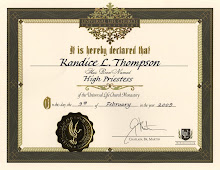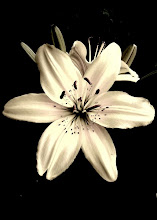Many religions celebrate the consumption of food with some sort of prayer of thanksgiving. Many Pagans, Wiccans and other Earth based religions/spiritualities believe that not only should we thank the gods/goddesses for our food, but also the earth and the food itself. After all, if you're eating plants or meat, something had to die so that you could have a meal. It seems rude not to thank your food for its sacrifice.
Here are several Blessings/Prayers you can use during this time of 'Thankfulness':
~ A Simple Thanks ~
Lord and Lady, watch over us,
and bless us as we eat.
Bless this food, this bounty of earth,
we thank you, so mote it be.
~ A Prayer to the Earth ~
Corn and grain, meat and milk,
upon my table before me.
Gifts of life, bringing sustenance and strength,
I am grateful for all I have.
~ Celebrating Meat ~
Hail! Hail! The hunt has ended,
and meat is on the table!
We honor the deer who feeds us tonight,
may his spirit live within us!
~ Invitation to the Gods ~
I set a place at my table for the gods,
and ask them to join me here tonight.
My home is always open to you,
and my heart is open as well.
~ Offerings ~
In ancient Rome, it was common to leave a bit of your food on the altar for your household deities. If you would like to do this at your meal, you could use the following prayer: This meal is the work of many hands,
and I offer you a share.
Holy ones, accept my gift,
and upon my hearth, leave your blessings.
~~~~~~~~~~~~~~~~~~~~~~~~~~~~~~~~~~~~~~~~~~~~~~~~~~~~~~~~
Thanksgiving SYMBOLISM
Some might think it's stretching the imagination to also tie in Thanksgiving with Pagan customs, but both Christian and Pagan religions give thanks, respectively, to God and their deities for the harvest. The Pilgrim's holiday is at the end of the gathering season.
Christians celebrated Lammas, the first harvest, by going to church in August, leaving loaves of bread on altars and giving thanks. Michaelmas, honoring the archangel St. Michael, was held on September 29th. Festivals of gratitude were held near or on the Sunday of the Harvest Moon, the full moon closest to the date of the autumnal equinox, usually occurring in September, sometimes in early October.
Native Americans had celebrations of reaping bountiful crops. As Pagan Europeans immigrated, they brought their customs of harvest festivals: Lughnasadh, Mabon and Samhain. Both Pagan traditions, featuring special foods, later influenced celebrations of the American Thanksgiving.
~ Meats ~
* Venison: Deer symbolizes innocence and gentleness. The doe represents subtlety and gracefulness; the stag, purification, independence and pride.
* Turkey: Called Ground Eagle by some tribes, is symbolic of harvest and shared blessings of Mother Earth.
* Rabbit: Although not mentioned in accounts of the feast, was one of the foods available to the Pilgrims in 1621. Rabbit's and hare's keynotes are new life, fertility, intuition, balance and rebirth.
~ Vegetables, Fruit and Grains ~
* Apples: The Celts attributed the powers of rebirth, youth and healing to this fruit.
* Beans: The Three Sisters in Native American legend were Maize or Indian corn, beans and squash. After corn, oldest sister, was planted, beans were next so their vines could grow around cornstalks, then squash, the youngest, which grew close to the earth. The way they grew is symbolic of cooperative community survival and mainstays in the tribes' diets.
* Maize and Cornmeal: Ceremonies were held for both planting and harvesting corn. The New England tribes' spring Green Corn ceremony was to ask for bountiful harvest. In August, also the month of the Celtic Lughnasadh, the Green Corn celebrated the first harvest. Cornmeal symbolizes fertility, healing and powers of people, animals, rituals and objects.
* Pumpkin: Represents sun and, according to some Native American tribes, symbolic of personal power.
* Wheat: Wheat celebrated abundance and was used in rituals to give thanks and pray bounty would last until the next year.
~ Cornucopias ~
The horn of plenty was a Native American basket shaped in the form of an upside-down tornado, filled with vegetables. It signified harvest's abundance when shared and thanks given to the deities. Indians brought these to the Pilgrims to alleviate their fear of scarcity.
While the European cornucopia, depicted as a goat's horn, used in Pagan harvest celebrations has roots in Greek mythology, it is highly unlikely this vessel influenced Thanksgiving traditions.
~~~~~~~~~~~~~~~~~~~~~~~~~~~~~~~~~~~~~~~~~~~~~~~~~~~~~~~~~~~~~~~
Give THANKS for all your abundances, health, family, love & gratitude.
Wishing all of you a wonderful Thanksgiving holiday that lasts the whole year!
Namaste,
Rainbow Tree

Subscribe to:
Post Comments (Atom)















No comments:
Post a Comment